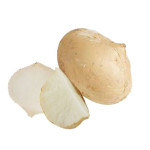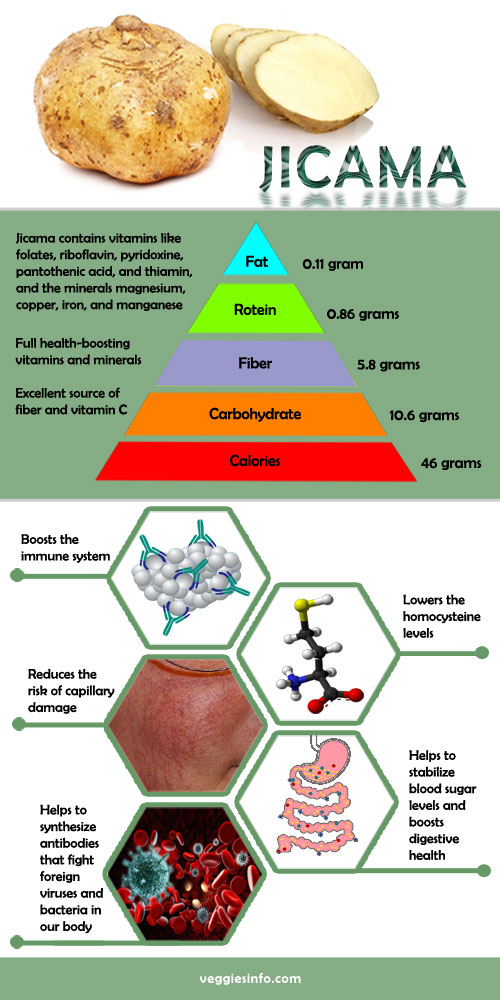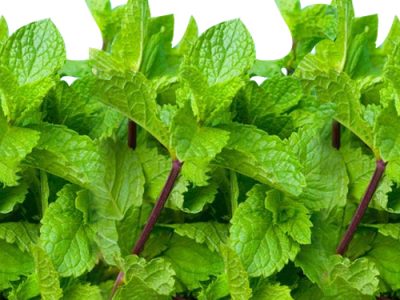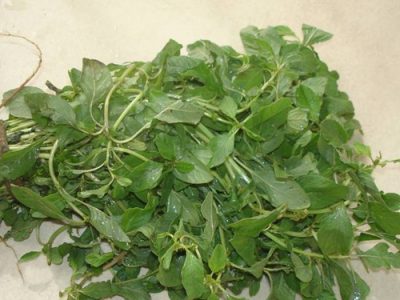
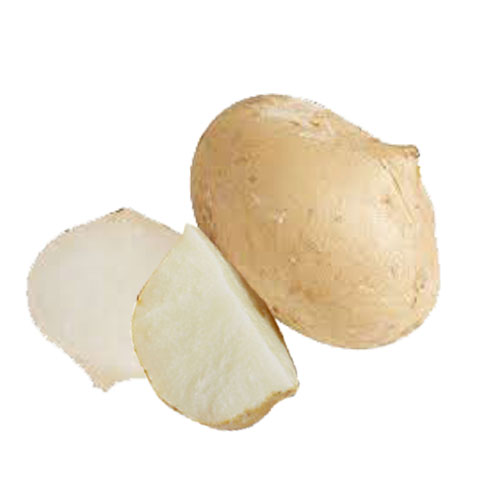
Jicama| Nutrition Summary , Health Properties
About Jicama
Scientifically known as Pachyrhizus erosus; jicama belongs to the Pachyrhizus genus and fabaceae family .It grows as a legume turns and later into a tuberous root that is popularly also known as yam bean. Mexican potato, Chinese potato, saa got and apiha are a few of the other popular names its called by. It has been cultivated in South America from a long period of time; this tuberous root resembles potato in its appearance. Jicama is grown out of vines that extend up to 20 feet long and have brown tuberous roots that weigh to average of 50 pounds. These plants grow in autumn in amidst of warm rich soil that is damp and fertile. Available throughout the year in markets these roots are easy to grown and are hassle free. Jicama is plucked out after nine months of plantation and is to be consumed at the earliest as they can no longer be conserved once they are out. They are stored in dark dry places in order to stop the growth of the root in presence of sunlight and water. This vegetable is known popularly as a heart of tex mex cuisine as it can be seen as a vital part of it.
Jicama Nutrition Facts
- Jicama contains vitamins like folates, riboflavin, pyridoxine, pantothenic acid, thiamin.
- Minerals magnesium, copper, iron, and manganese.
- Fiber – 5.8 grams.
- Calories – 46 ,Carbohydrate – 10.6 grams.
- Protein – 0.86 ,grams Total fat – 0.11 grams.
Jicama Benefits
- Full health-boosting vitamins and minerals.
- Helps to stabilize blood sugar levels and boosts digestive health.
- Helps to synthesize antibodies that Fight Foreign Viruses and bacteria in our body.
- Excellent source of fiber and vitamin C.
- Reduces the risk of capillary damage.
- Lowers the homocysteine levels.
- Boosts the immune system.
Jicama Interesting Facts
The root is fine to eat, but the leaves of the jicama plant is very poisonous.
| Principle | Nutrient Value | Percentage of RDA |
|---|---|---|
| Energy | 38 Kcal | 2% |
| Carbohydrates | 8.82 g | 7% |
| Protein | 0.72 g | 1% |
| Total Fat | 0.19 g | <1% |
| Cholesterol | 0 mg | 0% |
| Dietary Fiber | 4.9 g | 13% |
| Vitamins | ||
| Folates | 12 µg | 3% |
| Niacin | 0.200 mg | 1.5% |
| Pantothenic acid | 0.135 mg | 3% |
| Pyridoxine | 0.042 mg | 3% |
| Riboflavin | 0.029 mg | 2% |
| Thiamin | 0.020 mg | 2% |
| Vitamin A | 21 IU | 1% |
| Vitamin C | 20.2 mg | 34% |
| Vitamin E | 0.46 mg | 3% |
| Vitamin K | 0.3 µg | <1% |
| Electrolytes | ||
| Sodium | 4 mg | <1% |
| Potassium | 150 mg | 3% |
| Minerals | ||
| Calcium | 12 mg | 1% |
| Copper | 0.048 mg | 5% |
| Iron | 0.60 mg | 7% |
| Magnesium | 12 mg | 3% |
| Manganese | 0.60 mg | 3% |
| Zinc | 0.16 mg | 1% |
| Phyto-nutrients | ||
| Carotene-ß | 13 µg | — |
| Carotene-a | 0 µg | — |
| Lutein- zeaxanthin | 0 µg | — |
A cup of jicama that 130g of serving contains on 49 calories. One can definitely include it in their average 2000 daily calorie diet. Low in calories but it is definitely high in other vital nutrients such as proteins, vitamins, fibre, potassium and oxidants. It is high in phto nutrients , it is a compound derived only from plants and helps in nourishing the body. Jicama is a good source of dietary fibre, they also have diuretic properties that act as a laxative and ensuring smooth bowel movements. The anti oxidants present in this vegetable helps in reviving radical free components for free flow of blood and also has anti cancer property that keeps cancer such as breast cancer, prostate cancer and colon cancer at bay. Jicama contains 80% of water content and it helps in keeping the body hydrated; consumption of this tuberous vegetable during summers is a refreshing experience as it restores the replenished water from the body. Rich in vitamin A jicama is a recommended add on to the diet as it is essential for a healthy vision and clear eye sight for the aging adults. Vitamin C is known to ensure good bone health and promotes bone growth consumption of jicama is believed to useful in prevention of osteoporosis and arthritis. The carbohydrates of this plant are all derived from the sugar content of the vegetable.
How To Enjoy Jicama
Jicama is a lesser known vegetable but that doesn’t defy the fact that it is nutritious enough for consumption. It can be eaten raw as a vegetable, add it to char grilled vegetables, enjoy any fish or steaks with accompaniments of jicama fried with parsley and garlic. The starch derived from jicama is used to prepare crepes and soups.

